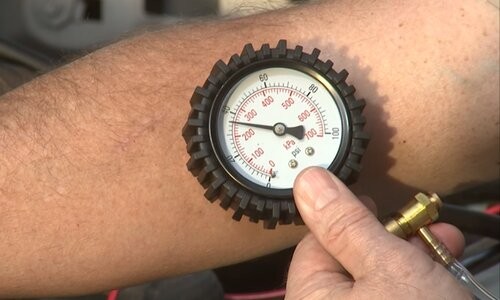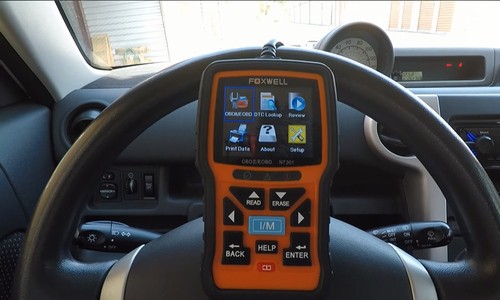Understanding and Resolving the P0131 Code Ford F150: Causes and Fixes
P0131 is a diagnostic test code that indicates a problem with your Ford F150. When you see a code like this displayed on your scanner, you may become worried about what it means. The meaning of this code is O2 sensor circuit low voltage (Bank 1, Sensor 1). Fortunately, this code doesn’t call for an emergency solution.
This article informs you about all the meanings of the P0131 Ford F150 code, what triggers it, and the symptoms. After getting the basic knowledge of this code, we will move on to how to diagnose it and fix it ourselves.
P0131 Code in Ford F150
The “P” at the beginning of this code means that this malfunction is present in the powertrain of your car. This code overall represents a problem with your car’s oxygen sensor in bank 1, which is located on the left side of your engine, and sensor 1, which sits in the exhaust system just before the catalytic converter.
Getting specific, there are majorly two malfunctions you may come across: the oxygen sensor sends improper voltage to the electronic control unit (ECU) or there may have been an incorrect air-to-fuel ratio.
Causes of P0131 in Ford F150
There are several reasons why this code can be triggered on your vehicle. But the major cause of this code is a faulty O2 sensor.
Every car needs an oxygen sensor to help the ECU determine the necessary air-to-fuel ratio for combustion. This will help your car to burn just the right amount of fuel to get you moving. When this car component is damaged, your car is unable to determine the accurate air-to-fuel ratio. A faulty oxygen sensor is the most common reason why you receive this code.
Other causes of this code include:
- Shorted or open O2 sensor circuit
- Leak in your exhaust system
- Wrong fuel pressure
- Malfunctioning engine coolant temperature sensor
- Incorrect or faulty wiring
Symptoms of the P0131 diagnostic code
When you receive the P0131 Ford F150 code, you will observe other unusual behaviors in your car that indicate there is a fault somewhere. These symptoms exhibited by your car are associated with your car’s oxygen sensor and sometimes the exhaust system. Here are some common symptoms that accompany this code.
Poor fuel economy
The oxygen sensor is responsible for helping the ECU determine the right air-to-fuel ratio. When it fails to do this, your car uses more fuel than is needed for power. This will lead to you purchasing more fuel than usual.
Checking engine lights is triggered
Your car’s engine check light is always triggered when there are unusual behaviors in your car. This light sits on your dashboard and it is usually colored yellow or orange. The presence of this code along with other symptoms will trigger this light.
Rough idles
You may experience some mild vibrations or shaking while driving. This unusual movement may be accompanied by other strange sounds. When experiencing rough idles, it is important to check for other symptoms of this code as these symptoms can be caused by other faults as well.

Loss of power
With your car's oxygen sensor malfunctioning and giving an incorrect reading to the ECU, more fuel will be used and this will lead to a loss of power when you run out of fuel.
Smell from exhaust
Usually, your car’s exhaust gets emitted out of the exhaust pipe, but with an exhaust leak, there the emission is directed toward other channels. This symptom can be seen when the fumes of the exhaust are thick or they smell more than usual.
How to diagnose a P0131 code?
The best way to diagnose this code is by using an OBD scanner which is used by most mechanics to read data from your vehicle and determine what’s wrong with it. Here are the steps you can take to diagnose this code using an OBD scanner.

- Underneath the dashboard of the driver’s seat, a DLC connector is located right there.
- After connecting this tool to the DLC connector, you should be able to find out what code is present, and with this code comes the freeze frame data. The freeze frame data is a screenshot taken the moment the code was triggered. This shows you under what driving conditions the problem started.
- You will need to confirm the presence of this code. You can do this by taking your Ford on a test drive to determine if the check engine light is present and if the code is triggered again.
- Check the wiring of the oxygen sensor and confirm that there is no physical damage present or any corroded parts.
- The oxygen sensor sits close to your car’s exhaust system. You need to check around this area and the various components for signs of a leak. Some of the components you can check include the manifolds, catalytic converters, and mufflers.
- The normal voltage range for your car should be between 0.1 volts and 1 volts. Use an oscilloscope to measure the voltage of your oxygen sensor. If the measured value falls below or above the recommended value, then you have a faulty oxygen sensor.
- For your Forf F150, your fuel pressure should range from 28-45 psi. Use a fuel pressure gauge to measure your current fuel pressure. A low reading causes your vehicle to run lean and this results in your oxygen sensor sending a low voltage to the ECU.
- Inspect the vacuum lines around your intakes and ensure that there are no leaks. You can do this by listening closely for wheezing sounds or by spraying water in this area and looking out for air bubbles or weird noises.
There are some common errors some people make while diagnosing their car because of this error code. This includes not conducting a test drive to confirm the presence of this code, not checking the exhaust system for any leaks or damage, and not checking other components like fuel pressure which are related to the oxygen sensor.
How to fix a P0131 code?
The processes involved in fixing this code are straightforward. Follow these steps to eliminate this code.
- Conduct a visual inspection and check the wiring of your oxygen sensor. Replace them if there is any physical damage or if they are corroded.
- In severe cases, you may be required to replace your entire oxygen sensor. This usually occurs when there is physical damage.
- If your fuel pressure is inaccurate after measurement. This is best done by an expert as it also involves the fuel injector.
- There may be exhaust leaks which may be a result of worn-out or damaged parts. If this is the case, you need to fix the leak immediately as it can affect other parts of your car.
If this problem seems like something you cannot handle, you can visit your nearest auto shop to have an expert diagnose the problem and fix it accurately.
Conclusion
Your Ford F150 may be having issues with its oxygen sensor, which is why the P0131 code might be visible in your car. The severity of this problem is not high and doesn’t call for emergency action, instead, you can get your car back to normal with some quick fixes.
This article should have explained the causes of the P0131 Ford F150 diagnostic code, its symptoms, how you can diagnose it, and how to fix it. If you are not up to the task of diagnosing and fixing these issues, we strongly recommend that you visit a professional to avoid further complications.



